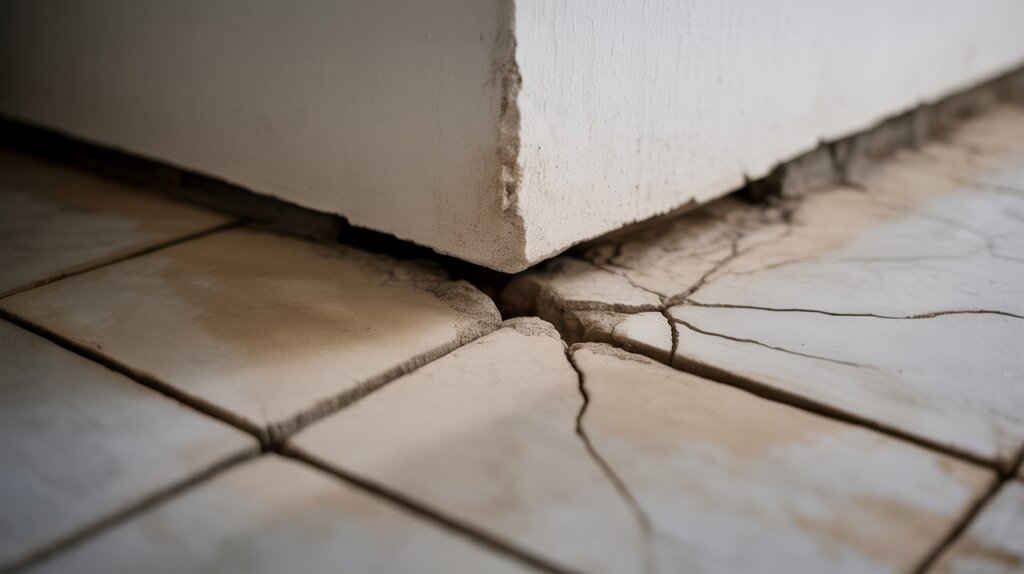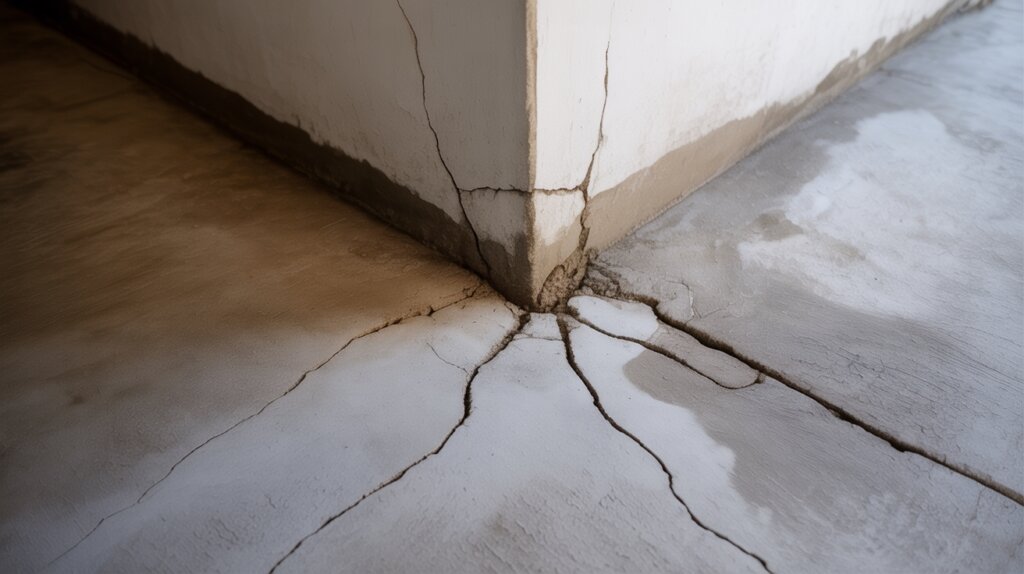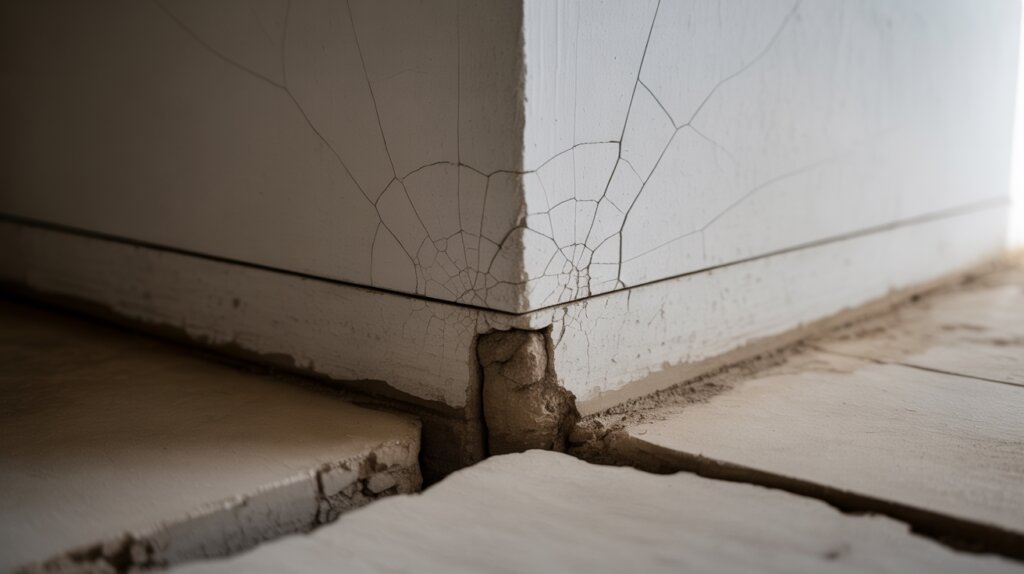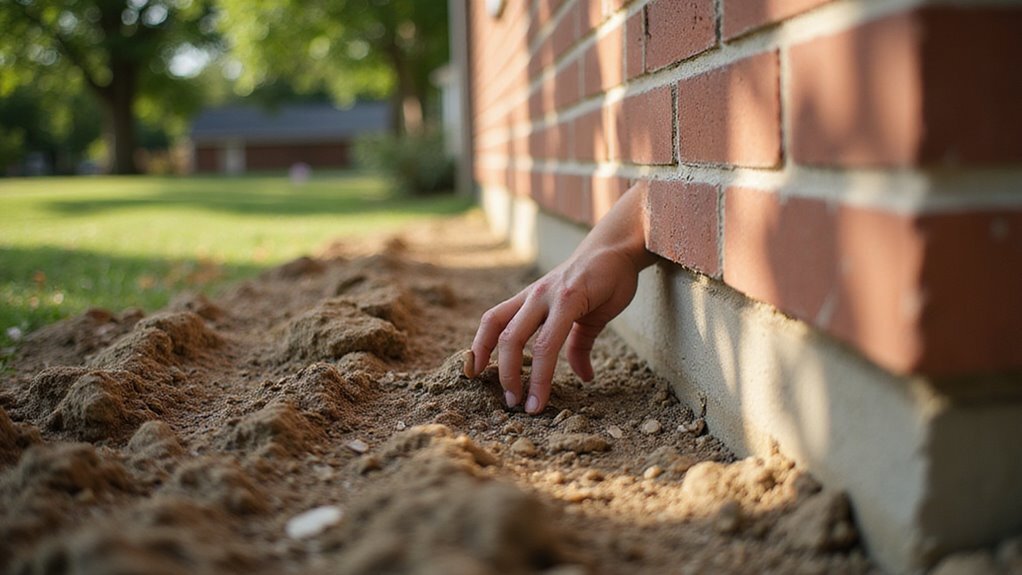Selling your home is a big step, but hidden foundation problems can ruin your plans. Many sellers do not notice warning signs until it is too late. These issues can delay sales, lower offers, or scare off buyers altogether.
Cracks in the walls, sloping floors, and doors that do not close right worry buyers. If you miss these signs, you may face sudden repairs or buyer demands during negotiations.
Stress, unexpected costs, and lost time can follow. You can avoid surprises by learning to spot foundation issues early. Knowing how to identify foundation issues before selling gives you more control and confidence.
Being proactive lets you fix problems before buyers ever see them. This blog will guide you step by step to spot and handle foundation problems before you sell your home.
Key Takeaways
- Look for cracks in interior and exterior walls, especially around doors, windows, and basement areas.
- Check for uneven floors, sticking doors or windows, and gaps around frames indicating shifting or settling.
- Inspect the exterior foundation for stair-step cracks, separations in brickwork, or leaning chimneys.
- Examine basement and crawl spaces for moisture stains, white powdery residue, or bowed walls.
- Monitor the ground around your home for soil pulling away, poor drainage, or sloping terrain near the foundation.
Understanding the Importance of a Solid Foundation

A solid foundation is important because it keeps a building safe and strong. If the foundation is weak, the property’s value drops. Buyers and inspectors always check for foundation problems.
Foundation issues can cause doors to stick, floors to become uneven, or walls to crack. These problems make it hard to sell a house. Lenders may refuse loans if they see foundation concerns. Recognizing foundation problems early can save homeowners money and prevent further structural damage.
If you fix foundation problems early, you can ask for a higher price. A secure foundation helps close deals faster. This protects your investment and the home’s future safety. Understanding inheritance basis can also help homeowners assess potential costs if they need repairs or sell after inheriting a property.
Common Causes of Foundation Problems
Many foundation problems happen because of soil movement, poor drainage, bad construction, or tree roots. Each of these issues can weaken your home’s foundation over time. Sellers should know how these problems start to protect their property. A thorough inspection can help identify potential issues early before they cause significant damage. Foundation assessment techniques and the importance of regular evaluations can help homeowners maintain their property’s integrity. Soil often shifts due to changes in moisture or clay content.
This can make the foundation settle unevenly or crack. If soil is unstable, the risk of damage increases. Improper drainage lets water build up around the foundation. Water can put pressure on the walls or weaken the soil, and liens on property can complicate repairs or legal processes related to foundation issues. Water can put pressure on the walls or weaken the soil. Good drainage helps prevent these problems. Tree roots can invade the soil near your home. Roots may draw out moisture and cause soil to shrink or move.
If large trees grow near the house, monitor their roots. Poor construction means builders used weak materials or shallow footings. These choices can lead to long-term structural issues. If construction was not done well, problems may show up later. Seasonal changes like freeze and thaw cycles or droughts also affect the foundation. These changes put stress on the soil and the house itself. If the weather is extreme, check the foundation regularly.
Visible Cracks in Walls and Ceilings

Cracks in walls or ceilings often show foundation movement or stress. These cracks can be vertical, horizontal, or stair-step. They usually appear near windows, doors, or where walls meet ceilings. A thorough inspection by a structural engineer can help determine if these cracks are serious or just cosmetic.
Wider or growing cracks may signal serious structural problems. Even small cracks should not be ignored. If you notice changes, consider getting a professional assessment. Proper inspection and understanding of the type of crack can help determine whether it’s related to foundation issues, which might influence your selling strategy. Buyers often see visible cracks as warning signs in a home. They may worry about expensive repairs and possible risks. Early detection and repairs can help protect your property’s value.
If you address cracks quickly, your home will look better to buyers. This can prevent surprises during inspections. Proactive repairs make your home more competitive in the market.
Uneven or Sloping Floors
Uneven or sloping floors often mean there are problems with the foundation. These floors can slope, sag, or feel uneven as you walk. Foundation problems are a common cause of this issue. Soil under the home may move or settle over time. If the soil shifts, the foundation can lose support and cause the floors to change height. Homes in areas with clay soils or poor drainage are more likely to have this problem.
Understanding foundation settlement can help homeowners assess the severity of the issue. Recognizing early signs of soil movement can enable timely repairs, potentially saving money and preventing further damage. Buyers may see sloping floors as a warning sign. They often expect expensive repairs and might lower their offers. If you plan to sell your home, you should fix uneven floors to avoid extra costs or delays.
Sticking Doors and Windows

When you notice doors or windows that persistently jam, it’s often an early indicator of underlying foundation movement. Assess each frame for visible misalignment, as shifting structures can distort openings and impact functionality.
Industry data shows that unresolved sticking frequently correlates with costly structural repairs down the line. Identifying foundation issues early can help prevent more extensive and expensive damage later, especially since foundation problems often lead to further structural damage if left unaddressed.
Recognizing Persistent Jamming
Persistent jamming of doors and windows often means your home’s foundation is moving. Seasonal humidity can cause minor swelling, but lasting issues are different. If doors or windows are hard to open in all seasons, foundation problems could be the cause.
Soil changes under your house may lead to this movement. Poor drainage or clay soil can make the foundation shift. If you notice these problems, act quickly.
Unfixed foundation issues can become expensive to repair. They may also lower your home’s value. Buyers and inspectors see sticking doors and windows as warning signs.
If you document jamming early, you can fix problems before selling. This helps protect your home’s market value. Early action is always better than waiting.
Assessing Frame Misalignment
Frame misalignment is more serious than just a seasonal problem if it happens after weather changes. Doors and windows that stick, don’t latch, or show uneven gaps might mean structural shifts. These issues often point to problems with your foundation.
Foundation settlement or soil movement can make frames lose their proper shape. Cracks in drywall or trim that separates at the corners are common warning signs. If doors or windows drag or do not close flat, take note of their locations.
If several frames on one side of your home have problems, foundation movement is likely. Homebuyers often notice these signs during inspections. Early detection helps you solve problems faster and keeps your home’s value strong.
Gaps Around Window Frames or Exterior Doors
You should carefully inspect for visible light seeping through gaps around window frames or exterior doors, as this signals potential foundation movement. When you notice increased difficulty opening doors or observe cracked trim and caulking, these are often early indicators of structural shifts.
Addressing these warning signs promptly can help you mitigate costly repairs and protect your property’s market value. Additionally, understanding foundation movement can guide you in determining whether professional inspection or repairs are necessary before selling. Recognizing signs of settling or shifting early can prevent more extensive damage and support a smoother sale process.
Visible Light Through Gaps
Visible light coming through gaps means there are openings around your windows or doors. These gaps often show that your home’s foundation might be shifting. If you see this, your house may have energy loss or security issues.
Light leaks can appear at the top or sides of window frames. Gaps around door frames let daylight inside, which is a clear warning sign. Drafts or cold spots near these gaps often confirm the problem.
If you notice expanding or shrinking materials around gaps, the foundation may be moving. Addressing these issues quickly can help keep your home’s value. If you want to sell, fixing the gaps is important for buyer confidence.
Difficulty Opening Doors
Difficulty opening doors often means there is a problem with your home’s foundation. If doors stick or do not close well, the frame may be out of alignment. This usually happens when the ground underneath your house shifts.
Foundation movement can also cause door locks to stop working properly. Misaligned frames can put stress on locks, making your home less secure. If buyers see these issues, they may worry about safety.
You might also notice gaps around windows or warped window frames. These are signs that the foundation is not stable. If you fix these problems early, it can help keep your home’s value high.
Addressing foundation issues can make selling your home easier. It reduces the risk of buyers raising concerns during inspections. Early repairs can save you money and lessen future problems.
Cracked Trim or Caulking
Subtle cracks in trim or caulking can signal deeper foundation problems. If you see damage near windows or doors, check for other signs. These issues may mean your house is shifting or settling.
Cracks or gaps appear as the home moves and finishes become misaligned. Caulking that splits or pulls away can point to foundation changes. Repeated repairs that fail are also a warning.
You should watch for trim pulling away from walls or frames. If you notice these signs, get a professional inspection soon. Early fixes help protect your home’s value and reassure buyers.
Separations in Exterior Brickwork or Siding
Separations in exterior brickwork or siding often mean the foundation is moving or settling. These gaps are not just surface problems. They usually show that the home’s structure may be at risk. Recognizing these signs early can help prevent costly repairs and maintain your property’s value. Step cracks and horizontal cracks in bricks are common warning signs. If you see bricks or siding pulling apart, the foundation might be unstable.
Siding that separates at the corners or between panels also points to possible movement below. Addressing foundation issues promptly can prevent further damage and costly repairs down the line. When foundation problems are detected early, homeowners can often sell their homes faster and at a better price. Home buyers notice these issues and may worry about repair costs. If you fix these problems early, your home will be more attractive. Quick action can also help you get a better price in a sale.
Issues With Basement or Crawl Space
Problems in the basement or crawl space often cause issues with the exterior brickwork. These hidden areas can affect your home’s structure and value. If you plan to sell, you should check these spaces carefully.
Uneven or sloping basement floors may show that the foundation is moving. Persistent moisture in the basement, even when it is dry outside, can point to drainage problems. Damaged or blocked crawl space vents may stop air from moving and create unhealthy conditions.
Cracks in basement walls or crawl space supports can mean the foundation is shifting. Early detection of these signs can help protect your investment. If you find any of these issues, it is best to fix them before selling. Addressing these problems promptly can improve your home’s curb appeal and facilitate a quicker sale.
Moisture and Water Damage Indicators
Excess moisture weakens your foundation. Wet soil under the foundation can shift or sink, causing damage. If you see water pooling near your foundation, it is a warning sign.
Moist conditions can lead to mold, mildew, and wood rot. These problems lower your property’s value. If you notice musty smells or water stains in basements, you should act quickly.
Here is a list of signs and what might cause them:
| Indicator | Possible Cause |
|---|---|
| Water stains on walls | Poor drainage outside |
| Musty odors | Ongoing dampness |
| Efflorescence | Water leaking in |
| Crumbling concrete | Standing water |
If you fix these issues before selling, you may avoid price reductions and speed up the sale.
Chimney Leaning or Cracking
You’ll want to recognize early signs of chimney leaning, such as visible separation from the house or uneven mortar joints. Assess crack severity by noting width, length, and whether the cracks are stair-stepped or vertical, as these patterns often indicate underlying foundation movement. Addressing these issues promptly can protect your property value and prevent escalating structural repairs.
Recognizing Chimney Lean Indicators
You can spot foundation problems if your chimney leans or has visible cracks. A chimney tilt often means the foundation or soil is shifting. Even a small lean can be a sign of a bigger issue.
Check for gaps between the chimney and the siding. If the gap gets wider, the problem may be getting worse. Look for cracks in the bricks or mortar, especially if they form a stair-step pattern.
Flashing that has moved at the roofline is another warning sign. This can let water enter your home and cause more damage. If the chimney base shifts away from the house, it often means the foundation is moving.
Watch these signs closely if you plan to sell your home. Buyers and inspectors notice chimney problems right away. Early attention can help prevent larger repairs later.
Assessing Crack Severity
Spotting a leaning chimney or visible cracks means you should inspect your home more closely. Not all cracks are serious, but some can signal bigger problems. You should look at the crack’s width, direction, and location to judge its severity.
Hairline cracks less than 1/8 inch wide are mostly cosmetic. If a crack is wider or has a stair-step pattern, it may show foundation movement. Horizontal cracks or cracks that widen at the top or bottom can mean serious structural changes.
You can mark the ends of a crack and check for growth over a few weeks. If a crack keeps getting bigger, your house may be settling or failing. This can lower your property’s value and make it harder to sell.
If you see bulging, chimney separation, or water coming in, call a professional right away. Early action can prevent costly repairs. Quick repairs also make selling your home easier.
Bowed or Bulging Walls
Bowed or bulging walls mean the foundation is under serious stress. These walls often bend inward because of water pressure or shifting soil. If you see this, your home’s structure may be at risk.
Buyers and inspectors notice wall bulging quickly. This problem warns them of possible foundation issues. If you plan to sell, bowed walls can lower your home’s value.
You can spot bowed or bulging walls by looking for certain signs. Check for horizontal or stair-step cracks in the basement walls. Look for any inward movement of the wall from the side.
If walls are not straight when checked with a level, this may also signal a problem. Moisture stains or white powdery spots are other warning signs. If you find these, act quickly.
If you document and repair bowed walls early, you can protect your home’s value. Quick action may make your property more appealing to buyers. Proper repairs also prevent bigger problems later.
Inspecting the Home’s Perimeter
When you inspect your home’s perimeter, focus on identifying cracks along exterior walls and signs of uneven ground or sloping. These indicators often signal differential settlement and can impact your property’s structural integrity and market value. Early detection lets you address foundation issues before they intensify into costly repairs.
Cracks Along Exterior Walls
You can spot possible foundation problems by looking for cracks along your home’s exterior walls. These cracks are often early signs of foundation issues. If you notice them, you should inspect further.
Horizontal cracks may mean the soil is moving or water pressure is pushing against the foundation. Stair-step cracks in brick or block can show the foundation is settling unevenly. If you spot these, the foundation may need repairs.
Vertical cracks wider than 1/8 inch can signal serious stress on the foundation. Cracks that appear near windows or doors can point to structural problems. If you find these patterns, consider fixing them before selling your home.
Identifying these issues early helps protect your property’s value. Buyers may feel more confident if you address foundation concerns in advance. Early repairs can prevent bigger problems later.
Uneven Ground or Sloping
Uneven ground or sloping near your home can be a sign of foundation problems. Soil that pulls away from the foundation shows possible shifting underneath. These changes can weaken your home’s stability.
Homeowners should inspect the ground around the house regularly. If you notice sloping or uneven soil, consider fixing landscaping or drainage issues. Poor drainage can cause soil erosion and make the problem worse.
If you plan to sell your home, buyers may spot these signs. Uneven ground can suggest costly repairs in the future. Fixing these issues early can help you avoid problems during the sale.
When to Bring in a Professional
Bring in a professional if you notice signs of foundation problems. A specialist can spot hidden issues that homeowners often miss. Timely expert help prevents small problems from getting worse.
You should call a foundation expert if you see cracks that keep getting bigger. Uneven or sloping floors are also a warning sign. Sticking doors or windows that do not close properly can mean trouble.
If you find water or moisture near your foundation, get a professional opinion. A certified inspection gives you a clear report on any issues. This information helps you make better decisions when selling your home.
Preparing Your Home for the Market After Repairs
After you finish foundation repairs, prepare your home well to attract buyers. Keep all documents that show what work was done. Buyers may ask to see proof that repairs were done by professionals.
If you have warranties or guarantees, mention them in your listing. This can make buyers feel more confident and may support your asking price. Always share important repair details with buyers.
Fix any leftover cosmetic problems, like wall cracks or uneven floors. These small repairs show you care for your home. They also help your house look its best.
Consider getting a follow-up foundation inspection. This can prove that the repairs worked and add extra value. If you do this, buyers may trust your home even more.
Being open and organized with repair records sets your home apart. Clear information can make your home more appealing in a busy market.
Conclusion
If you want to sell your home smoothly, you should identify foundation issues early. Addressing these problems can prevent delays and boost buyer trust. If you ignore warning signs, you may face lower offers or failed sales.
If you need a fast sale, we buy houses for cash, even with foundation concerns. You can save time and avoid costly repairs by selling directly. We make the process simple and stress-free for homeowners.
If you are ready to sell or need advice, contact us at Greg Buys Houses today. We are here to help you with any situation. Let us give you a fair cash offer for your home.

